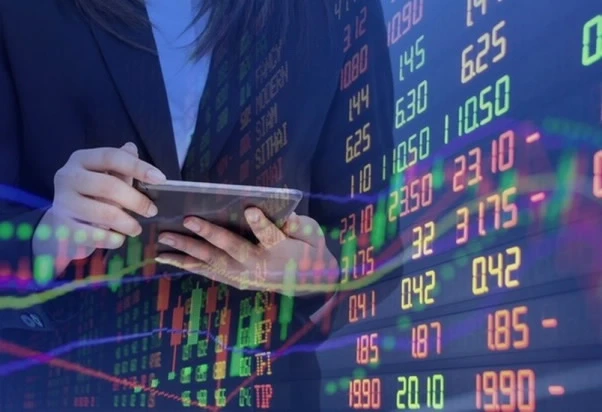
While signals of the market approaching its peak are growing more apparent, and most stocks have peaked in line with the index before undergoing corrections, there are still stocks that are moving in the opposite direction.
Contrarian Cash Flows
The VN-Index reached its highest peak of 2023 on September 6, closing at 1,245.5 points, with the index briefly touching 1,255.11 points on September 7. Earlier in August 2023, the VN-Index had established its first peak at 1,243.26 points on August 16. From a technical analysis perspective, the early September peak represented a retest of the August peak, which could not be surpassed, despite a marginal difference of a few points.
Hence, concerning the correlation between stock price strength and the VN-Index, two scenarios emerge. First, a stock may establish a price peak corresponding to the VN-Index peak in August or early September (with a few sessions of time difference) and then adjust to a lower level, mirroring the index's evolution. Second, a stock's price may continue to rise beyond the August or September peak while the VN-Index experiences a downward adjustment. Stocks in the second scenario are considered to have the power to defy the market.
According to HoSE statistics, approximately 13.4% of stocks currently exhibit signs of moving against the market. This represents a relatively low proportion and can be considered consistent with the representational error in the VN-Index. Furthermore, none of these stocks are among the top 50 largest capitalization stocks in the index. Lastly, only around 50% of these stocks have had an average daily trading volume of 1 million shares or more during the period.
Regarding the representativeness of industry groups, stocks with the highest liquidity and the strongest contrarian moves are concentrated in the securities and real estate sectors, especially within the securities group. Notable examples include BSI, CTS, AGR, SSI, and ORS, which have not only seen sharp price increases but also boast high liquidity. The typical price movement pattern for these stocks is to reach their first peak in August, corresponding to the VN-Index, before undergoing a brief period of correction. However, come early September, instead of reaching a second peak in line with the index, their prices continued to surge, often reaching new highs.
For instance, BSI achieved its highest peak of 2023 in early August, ahead of the VN-Index, and then corrected by approximately 12%, hitting a bottom on August 21. Subsequently, while the VN-Index recovered in September, it had not yet returned to its August peak. In contrast, BSI had increased by around 32% compared to its early August peak. Statistics for a few other stocks also illustrate significant price increases beyond the peak, such as CTS (up 22.4%), AGR (up 23%), SSI (up 22.5%), and ORS (up 24.6%).
Rising Speculative Demand
During market corrections, which can be brief but intense, the pursuit of opportunities that go against the market often arises. Generally, two situations may lead to contrarian market moves: manipulation based on low liquidity or attracting short-term cash flows. Stocks that are moving against the market with high liquidity, like those in the current stock group, tend to attract substantial capital. These stocks present opportunities that are clearly identifiable and are supported by investor expectations.
Currently, stocks are seen as the most lucrative option in the highly liquid environment, especially in the context of leverage lending services. The third quarter offers the potential for substantial profits, particularly when self-trading is favored. However, the rationality of these expectations hinges on third-quarter 2023 profit figures, which have yet to be announced. Nevertheless, an intriguing and believable narrative is often sufficient to boost stock prices.
The market is currently experiencing a substantial influx of new capital, driven by persistently low deposit interest rates. August statistics revealed a surge in the number of new investment accounts opened by individual domestic investors, marking the highest figure in the past year. This development coincides with the peak in savings interest rates in December 2022 and January 2023, meaning that short-term deposits are maturing from June onwards. The past three months have also seen a sharp rise in new securities accounts. When new money flows into the market, there is a heightened demand for quick profits and active trading. In August, total liquidity on HoSE increased by 32% compared to July and doubled the average level of the first seven months of the year.
The net trading data of individual investors underscores the significant risk associated with bottom-fishing during periods of high market volatility. Since early September, despite substantial market fluctuations, individual investors have been net buyers, contributing billions of Vietnamese dong to the market. From September onwards, this group has held net buying positions of approximately VND 7,000 billion, even as the market approaches its peak. In August, this figure stood at around VND 4,300 billion.




















